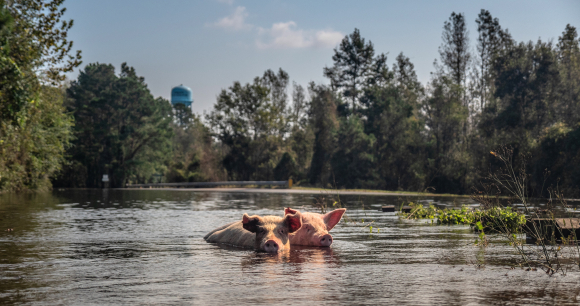
When natural disasters or other emergencies occur at locations with farmed animals, the impacts can be devastating. On large factory farms where thousands or even millions of animals are warehoused, an emergency situation can turn into a mass casualty event very quickly. This is yet another consequence of our industrialized animal agriculture system that prioritizes efficiency and profits at the expense of the health and safety of countless animals.
In the absence of laws and regulations to rein in the size of these mega-operations, one of the best ways producers can mitigate damage and prevent animals from suffering and dying in such events is by developing emergency response plans. Emergency planning is strongly encouraged by leading agricultural and animal health entities, including the US Department of Agriculture, the American Veterinary Medical Association, and the World Organisation for Animal Health, as well as the Federal Emergency Management Agency and numerous major animal agriculture industry groups. In fact, emergency planning is often required or recommended as a component of auditing and certification programs developed by industry trade groups and third-party animal welfare organizations.
Whether an emergency on a farm is the result of extreme weather, barn fires, or disease outbreaks that prompt “depopulations” (mass killings) of animals, the events nearly always involve severely negative impacts on animal welfare and immense suffering. These situations are made worse by the fact that there are no federal laws that protect animals on the farm or require the development of emergency response plans—even when thousands or millions of animals’ lives are at stake. Click through the links above to find more information on how emergencies impact animal welfare and what more can be done through emergency and disaster management to better protect animals on farms.